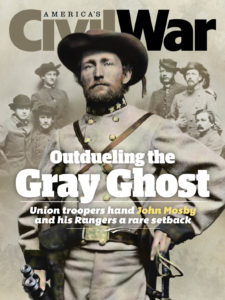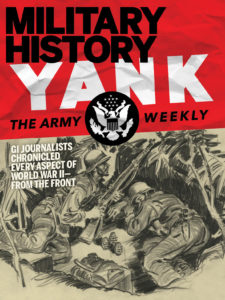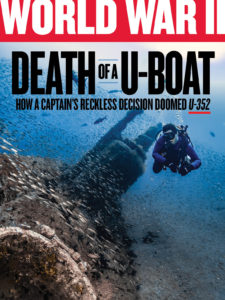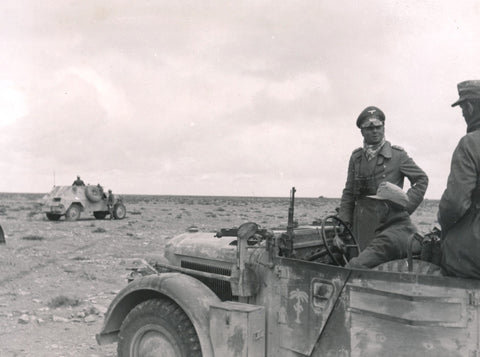
The Many Times Rommel Escaped Death or Capture During World War II
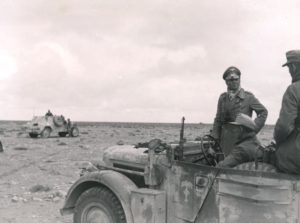
While famed German Field Marshal Erwin Rommel is widely recognized for his unconventional genius on the battlefield, few are aware of his talents as an escape artist. Rommel had a knack for poking his nose into trouble in wartime. A proud infantryman, he had a plucky personality and liked to improvise his plans based on cold calculations. Thus to adapt his battle plans — and satisfy his curiosity — Rommel often ventured into hotspots where few senior commanders would dare set foot.
While some of Rommel’s misadventures during World War I could be attributed to youthful inexperience, the spry Swabian commander continued to be a magnet for danger as a middle-aged man during World War II.
His hands-on approach to warfare resulted in harrowing brushes with death or captivity. Sometimes Rommel engineered a quick getaway. Other times, he was just lucky. In most cases he barely managed to escape.
Since his style of leading from the front constantly put him in dangerous situations, it would be impossible to recount all the perils Rommel faced in wartime. Here are some notable instances from World War II in which the Desert Fox faced acute threats to his personal safety yet managed to cheat doom.
GET HISTORY’S GREATEST TALES—RIGHT IN YOUR INBOX
Subscribe to our Historynet Now! newsletter for the best of the past, delivered every Wednesday.
Nearly Shot Up in a Tank
Rommel made his debut as a tank commander in France 1940 when leading the 7th Panzer Division, comprised of a mere 218 tanks, mostly Czech-built. This division would later become known as the “Ghost Division.” Although he had enthusiastically studied the potential of armored warfare in his readings of military theorists, Rommel had relatively little time to prepare for waging this new style of warfare during the period between his assuming command of the division on Feb. 15, 1940, at Bad Godesberg in Germany and the German invasion of France and the Low Countries in early May. Champing at the bit to see some action after a long hiatus from combat, Rommel eagerly moved at the head of his division, hopping in and out of tanks and combat vehicles and personally rallying troops forward.
Rommel nearly met his end inside of a tank on May 14, 1940 when he came under heavy enemy artillery and anti-tank fire near Onhaye, Belgium. Rommel’s tank had just reached the edge of a forest and was about to cross what he described in his memoirs as a “low plantation” when the tank was targeted by heavy artillery and antitank gunfire.
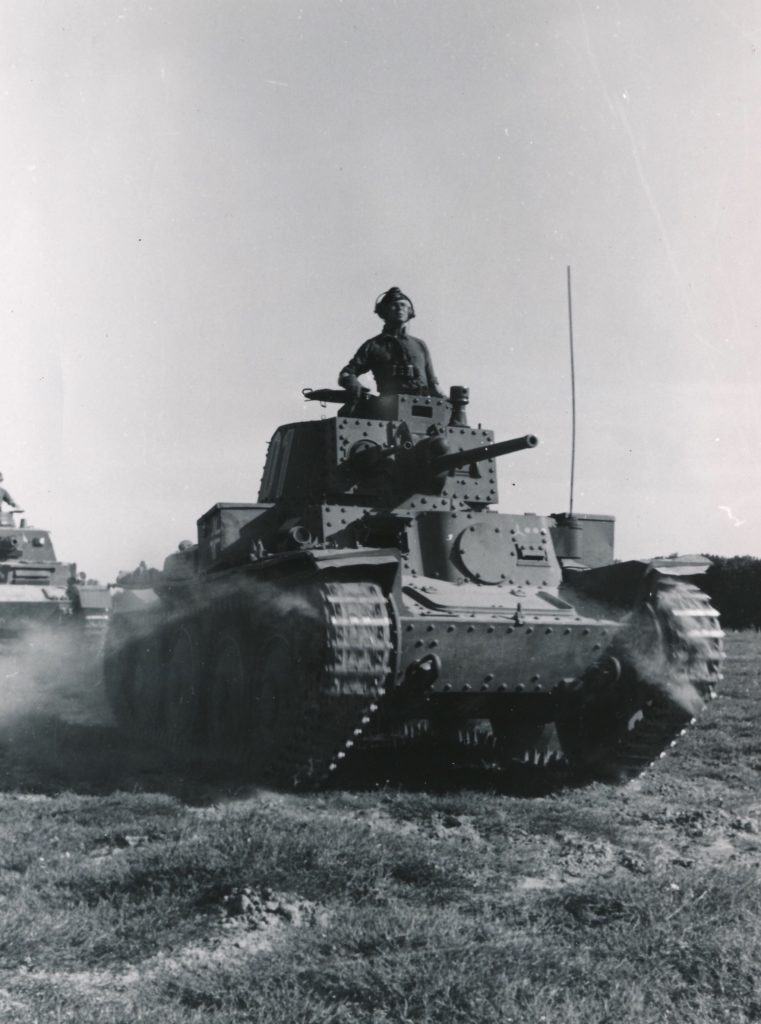
“Shells landed all around us and my tank received two hits one after the other, the first on the upper edge of the turret and the second in the periscope,” Rommel later wrote. The shell explosion in the periscope sent hot splinters flying; one fragment hit Rommel in the face, leaving a superficial but bloody gash in his cheek.
Recommended for you
As the tank driver sped for cover in the bushes, the heavy armored vehicle careened over a steep slope and slid out of control, landing on its side in full view of enemy gunners 500 yards away. His face bloodied, Rommel tried to swing the 37 mm turret gun around to face the enemy, but due to gravity and the awkward angle at which the heavy turret was positioned, the gun would not budge. The French battery opened fire.
With seconds to spare before being blasted to smithereens, Rommel and the crew exited the tank and fled for their lives through a hail of explosions.
“At that moment the subaltern in command of the tanks escorting the infantry reported himself seriously wounded, with the words: ‘Herr General, my left arm has been shot off,’” Rommel wrote. “We clambered up through the sandy pit, shells crashing and splintering all around.”
Somehow he had narrowly avoided sharing the same fate as many of his tank crews who fought under his command in Europe and North Africa.
Targeted by German Artillery
It would not be the last time during the French campaign that Rommel would nearly be blown to bits. The future Field Marshal was nearly blasted by some mistakenly aimed German artillery — not once, but twice.
On May 28, 1940, Rommel’s Divisional H.Q. came under fire from the heavy artillery of a nearby German division.
“There was no doubt that they were our own shells, probably 150 mm., with whose effect we were only too familiar,” Rommel wrote.
Rommel and his frantic fellow Germans attempted to signal their comrades with green flares to get them to stop firing, but in vain. They saw hope in making radio contact – the only problem being that the radio equipment was located in a signals truck, which was most inconveniently parked outside directly in the zone of the shellfire. Reaching the truck would mean a dash between life and death.
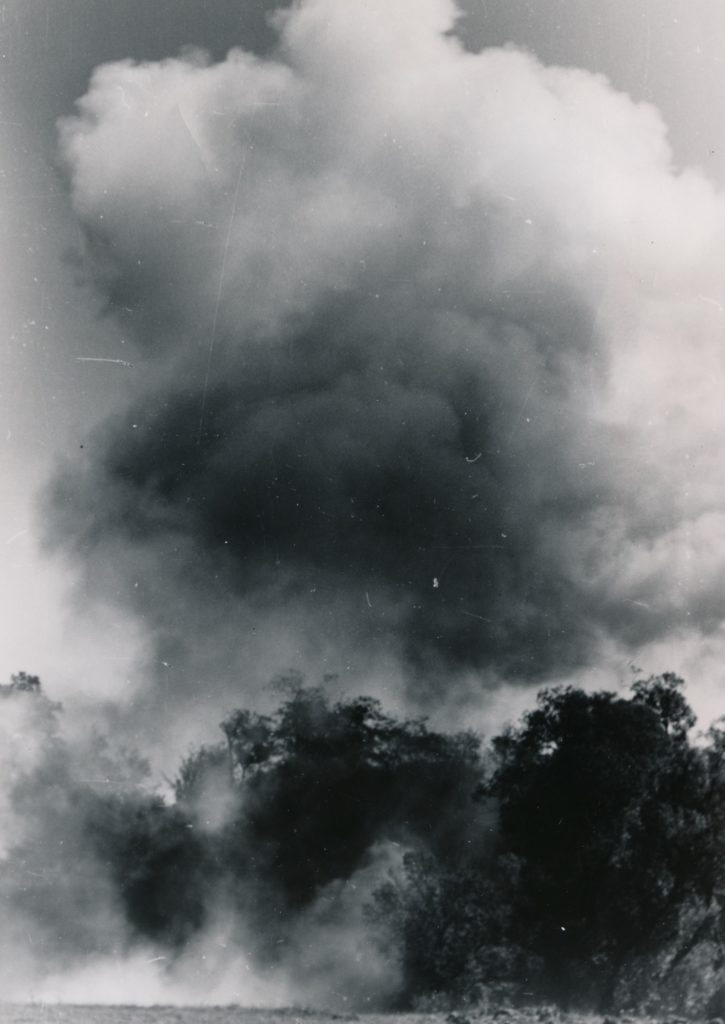
In a desperate attempt to call the shells off, Rommel sprinted into the danger zone, accompanied by Maj. Erdmann, commander of the 37th Reconnaissance Battalion. Erdmann ran faster — and straight into his doom when a heavy shell landed in front of them. Rommel gave an unusually morbid description of Erdmann’s fate.
“When the smoke cleared, Major Erdmann … lay face to the ground, dead, with his back shattered. He was bleeding from the head and from an enormous wound in his back. His left hand was still grasping his leather gloves,” Rommel wrote. “I had escaped unscathed, though the same shell had wounded several other officers and men.”
An almost repeat performance of this disaster occurred later on June 19, 1940, in an area south of Redoute du Tot in France. Rommel had typically gone exploring and, having come across a machine gun platoon hiding in the bushes, was haranguing the men to get themselves forward into a more aggressive position. Rommel had just finished giving a piece of his mind to the platoon commander and was going to leave the scene “when shells suddenly started to fall behind us, apparently from our own artillery. We dived straight for cover in a trench to our right, but not before a shell had killed the dispatch rider, Ehrmann, and wounded the signals officer, an N.C.O. and a second dispatch rider.”
Lecturing the machine gun platoon had come at a heavy price.
Left in the Lurch
Sometimes, however, Rommel’s men needed extra motivation, and there was nobody quite like Rommel to light a fire under them to get them moving — even if he occasionally found it frightening. On June 10, 1940, Rommel had slightly more success in spurring some idling troops into action, although he nearly paid a high price for it.
Rommel was riding in a vehicle within a tank column when suddenly the enemy opened antitank fire from a village they were approaching. The lead tank was hit square in one of its tracks and stalled. As the enemy gunners began firing a rapid volley at the German column, the tanks of Rommel’s fearsome Ghost Division began scattering like a flock of chickens.
“Without replying to the fire, the tanks in front of us drove straight up on the embankment on both sides of the road,” Rommel wrote later in disgust. “The leading tank remained where it had been hit.”
To add insult to injury, Rommel’s troops had not only fled for cover but had left him in the lurch.
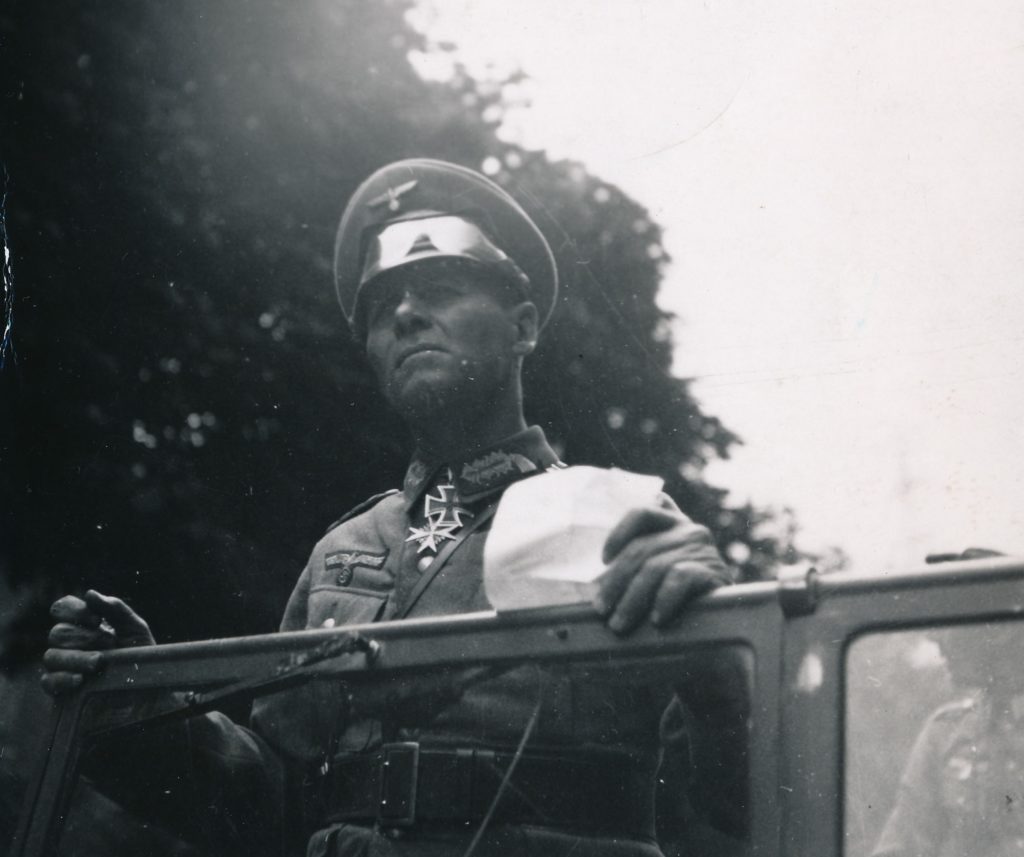
“My vehicle was now left standing only 150 yards away from the enemy gun, with round after round whistling a hairsbreadth overhead,” he wrote. “When, after two or three minutes of this our tanks had still not opened fire, I jumped down from my vehicle and ran to the Panzer II standing on the embankment left of the road, where I also found the commander of the leading tank.”
Apparently, the commander of the lead tank had run to take cover in a safer position. Rommel was outraged.
“I told him what I thought of him for not having opened fire immediately and for having left his tank,” he wrote, leaving the details of the tongue-lashing to readers’ imaginations.
With Rommel spurring them on, the Germans began firing back, and the enemy fire ceased.
Near-Death By Mistaken Identity
After surviving numerous harrowing escapades in France, Rommel proceeded to put himself more in harm’s way after arriving in North Africa in February 1941. This would be the arena of combat where Rommel proved his abilities as a master of mobile warfare and carved his niche into history as the leader of the Afrika Korps, which, even if it lost in the end, certainly gave the British a run for their money.
Yet several unforeseen twists of fate could have prevented any of this from happening — none quite so ironic as the cases of mistaken identity to which Rommel seemed particularly prone in the vast and bewildering desert wastelands of North Africa.
One almost comical instance occurred on April 7, 1941 when Rommel almost landed his reconnaissance plane among British troops near Mechili. It wasn’t entirely his mistake — the British apparently mistook him for a friendly flyer and politely invited him to come down by laying out a landing cross for him in the desert. Rommel, who often hovered over his troops like a little hawk in his Fieseler Storch aircraft, had been searching for an errant German column which had seemingly gotten lost in the wilderness. Assuming he had found his missing troops, he ordered his plane to land. Fortunately for Rommel, his sharp eyesight prevailed at the last minute.
“At the last moment I suddenly spotted the flat helmets of British troops,” he wrote. “We immediately banked and made off, followed by machine-gun fire from the British troops. We were lucky to get away practically unscathed, with only one hit in the tail.”
Almost the same thing happened the very next day, although in this instance it was Rommel’s own troops who mistook him for a British aircraft. On April 8, 1941, Rommel decided to supervise his attack on Mechili from the air. He had great expectations for his attack, which he wrote about in a letter to his wife that day.
“It’s going to be a Cannae — modern-style,” he wrote, although he admitted that his troops had been “attacking for days in the endless desert and have lost all idea of space or time.”
Indeed, nobody perhaps felt more lost than some troopers of an Italian Bersaglieri battalion when a blissfully confident Rommel suddenly swooped over their heads, flying at about 150 feet. The men grabbed their guns and let loose. Rommel’s observation tour nearly ended in a hail of bullets as his Storch became the object of an Italian military turkey shoot.
“The Italians had apparently never seen a Storch before and were so completely bewildered by our sudden appearance over their heads that they fired on us from all directions,” Rommel wrote, adding with ironic humor: “At the range of 50 to 100 yards, it was a miracle that we were not shot down, and it did not speak well for Italian marksmanship.”
Undeterred, Rommel ordered his aircraft to ascend to 3,000 feet, where he continued to hover over the battle.
Lost In the Desert
Although Rommel availed himself of the shifting sands of desert wildernesses to elude his enemies as the Desert Fox, he found that it was sometimes just as easy to get lost in the desert himself. On April 19, 1941, Rommel was in the midst of making preparations to attack the famous desert stronghold of Tobruk when he was driven off into the wastelands due to fierce enemy attacks.
British aircraft unleashed deadly fury in two strafing attacks on Rommel’s command vehicle convoy, which was moving about 10 miles west of Bardia.
“Corporal Eggert, the driver of my cross-country vehicle, was killed; the vehicle received 25 hits,” Rommel reported later. “My dispatch rider, Private Kanthak, was also killed.”
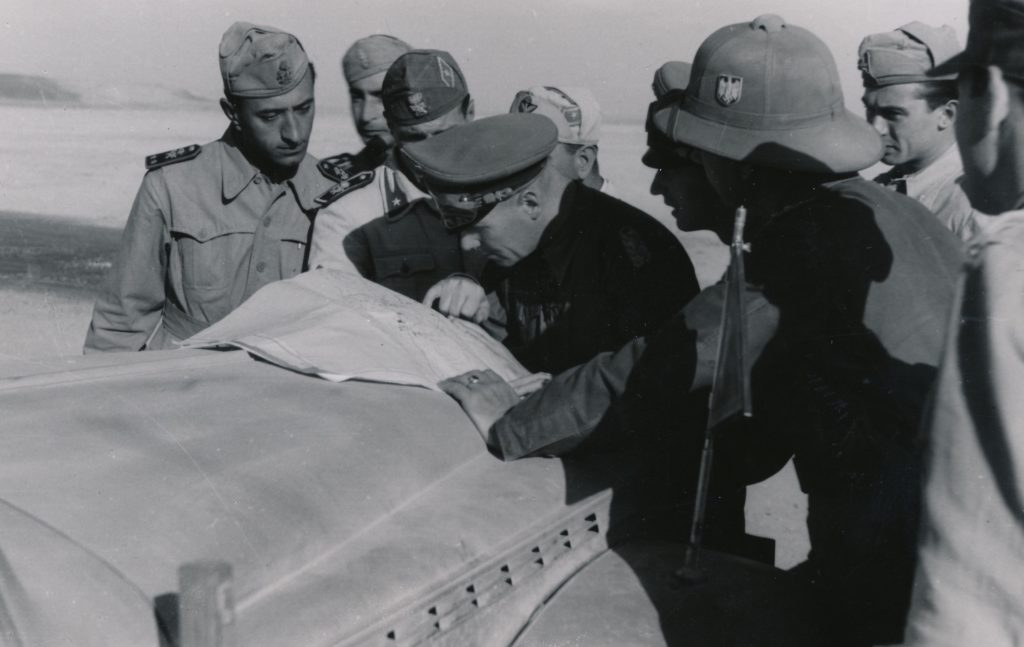
Although Rommel was presumably safe inside his favorite type of military vehicle, dubbed the “Mammoth” — an AEC “Dorchester” Armored Command Vehicle captured from the British — that illusion ended when a bullet came straight through the visor and wounded the driver. Determined get back to his headquarters that night, Rommel said he “climbed into the driving seat of my Mammoth and drove myself.” He attempted to bypass Tobruk by driving south into the desert. Yet the “shortcut” had unintended consequences.
“It was a pitch-black night and we tried to navigate by the stars, but the sky eventually clouded over so that I was forced to give up the attempt and wait till morning,” Rommel confessed.
He got stranded again in late November 1941 after personally arranging the disposition of his 21st Panzer Division. Rommel had only taken one vehicle this time, and it broke down while en route to Sidi Omar in Libya. Lucky enough to be found by one of his generals and additional staff riding in a captured Mammoth vehicle, Rommel hitched a ride with them.
Problematically, the single truck was “now carrying all the most senior officers of the Panzer Group,” according to Lt. Gen. Fritz Bayerlein, who wrote of the events afterward. The German officers had a bumpy desert ride and became lost “in an area completely dominated by the enemy.” Rommel took over navigating but had no more luck finding a way forward than the others traveling with him.
In the meantime, the British swarmed around the hapless German commanders without the faintest idea that the nucleus of enemy leadership was in their midst.
“Indian dispatch riders buzzed to and fro past the Mammoth, British tanks moved up forward and American-built lorries ground their way through the desert,” Bayerlein wrote dryly. “None of them had any suspicion that the highest officers of the German-Italian Panzer Group were sitting in a captured command vehicle, often only two or three yards away.”
He noted that the 10 officers and five men spent a “restless” night.
Near Misses
Although it can be said that Rommel was asking for trouble with his hands-on style of leadership, trouble at times also came looking for Rommel without his invitation. Had such coincidences ended differently, the outcome of history would have changed. He was nearly assassinated by a civilian in France 1940.
“In the western outskirts of Flers we passed a large square crowded, as usual, with French soldiers and civilians. Suddenly a civilian a few yards from the column ran towards my car with drawn revolver, intending to shoot, but French troops pulled him up short and prevented him carrying out his purpose,” Rommel wrote, adding laconically, “We drove on.”
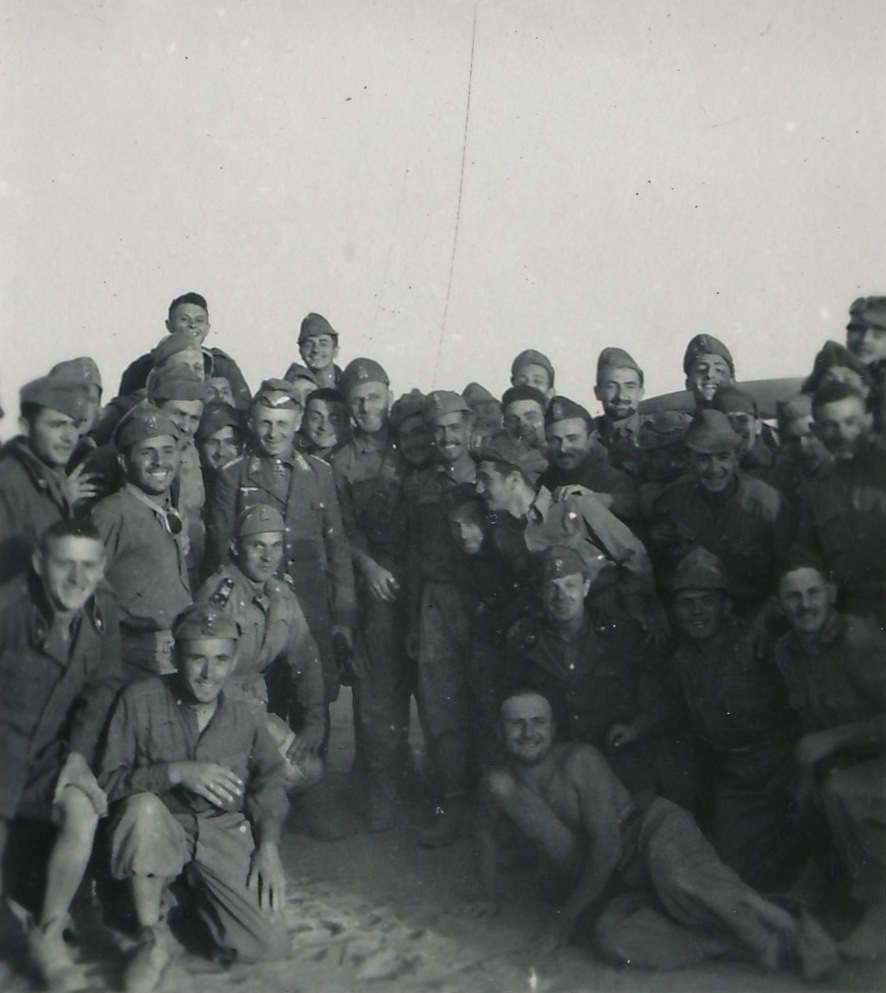
A stray shell splinter could have brought a swift end to his rising military career on April 10, 1942 when it zipped through his window and struck him right in the middle.
“A shell splinter came through the window recently and landed in my stomach after going through my overcoat and jacket,” he wrote incredulously in a letter home afterward. “All it left was a multicolored bruise the size of a plate. It was finally stopped by my trousers. The luck of the devil!”
Inspiring His Troops
Rommel was seemingly not put off by his constant brushes with danger and death. After recovering from a grim experience he would usually quickly return to carrying out his purpose, and would at times relate the incidents with cold detachment or ironic humor in his letters and memoirs.
Although Rommel’s risky behavior made him a source of frustration to his staff, his troops appreciated his plucky sense of daring and his direct contact with them, and came to view him as one of their own.
Rommel persisted in placing himself in danger alongside the front line troops even up until his last days commanding German forces in North Africa. Capt. Alfred Berndt described the men’s reaction to Rommel’s daring behavior in a letter on Feb. 26, 1943: “It was wonderful to see the joy of his troops during the last few days, as he [Rommel] drove along their columns. And when, in the middle of the attack, he appeared among a new division … right up with the leading infantry scouts in front of the tank spearheads, and lay in the mud among the men under artillery fire in his old way, how their eyes lit up.”
Although Rommel’s approach to military leadership in the field was unconventional to say the least, his brushes with danger increased his bond with the men under his command, and thus contributed a great deal to his successes on the battlefield.
historynet magazines
Our 9 best-selling history titles feature in-depth storytelling and iconic imagery to engage and inform on the people, the wars, and the events that shaped America and the world. Sale! Save $7.99 on your subscription today!

